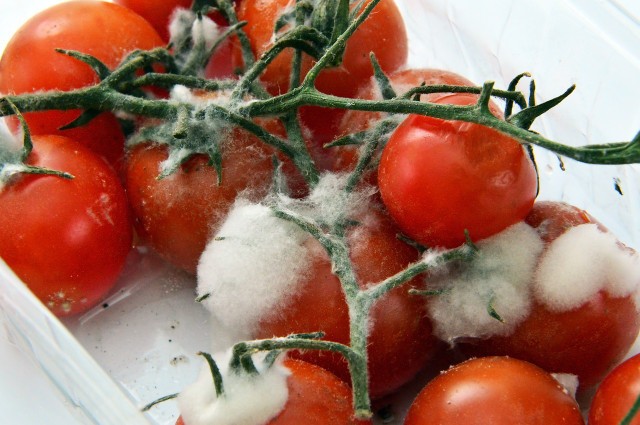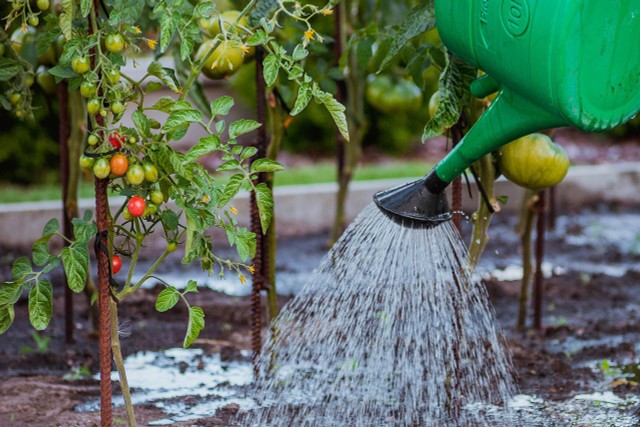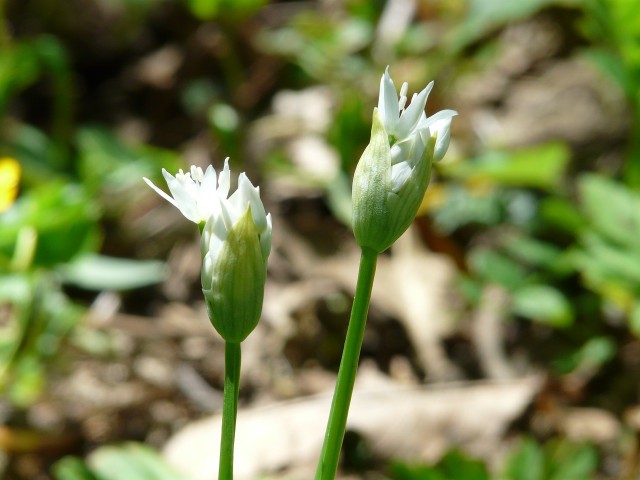Last updated on October 23rd, 2023 at 08:36 pm

Gray mold is one of the most common parasites in our gardens. The fungus is resistant and has a wide host range. How to get rid of gray mold naturally and how to protect your plants preventively, you can read here.
Gray mold is a particularly adaptable fungus that has a wide host range. This means that many different plants can be affected by the sore and weak fungus.
Gray mold is extremely hardy and resistant. The parasite survives the cold season in the soil or on dead plant parts. It spreads particularly quickly in humid climates. Temperatures between 20 and 28 degrees are optimal for its growth.
Recognize gray mold

Gray mold, also known as Botyritis cinerea, forms an extensive gray fungal lawn that is heavily dusty. Basically, all parts of the plant can be affected. Fruits, flowers and soft plant parts are particularly frequently affected.
As a result of the infestation, affected plant parts die, and brown spots also form on the fruits and leaves. Branches and woody plant parts may also be affected and form spots. Fruits are initially more glassy than usual.
You’ll find gray mold particularly common on the following plants:
- Tomatoes
- Cucumbers
- Onions
- Lettuce
- berries, especially strawberries, raspberries and blackberries
But also ornamental plants are often affected by the troublesome fungus:
- Roses
- Tulips
- Rhododendrons
- Hydrangeas
Fight gray mold naturally

Gray mold is extremely adaptable and quickly develops resistance. Therefore, it is best to completely avoid chemical sprays and fight the fungus with natural means and preventive measures. This is better for the soil, the affected plants and ultimately for you when you eat the fruit.
You can fight gray mold naturally with the following measures:
- Remove affected plant parts: If you have discovered gray mold on your plants, the first thing to do is to remove all affected leaves and plant parts. Check your plants regularly to prevent further spread. Dispose of the plant parts in the trash, as the spores can survive in the compost and you would spread them around your garden next year.
- Strengthen plants: The sore and weak parasite cannot attack healthy and strong plants. Nettle liquid manure is a good organic fertilizer to strengthen your plants and protect them at the same time. Horsetail broth can also help. Spray the leaves of your plants with the natural remedy. If you want to plant new plants, you can already dip the root ball in horsetail broth.
- Defoliate plants: Since gray mold spreads best in warm, humid climates, you can remove some foliage so that the leaves are better ventilated and dry more quickly.
- Water properly: Splashing water is one of the main causes of the spread of gray mold. Water your plants carefully and judiciously. It is best to water so that the leaves do not come into contact with water at all and so that the water seeps directly into the soil. Morning is the best time to water. This gives the plants a long time to dry out again.
Prevent gray mold

To prevent the pesky fungus from spreading among your plants in the first place, you can consider the following preventive tips:
- Sufficient distance: Always place your plants with sufficient distance. This way, the moisture does not linger between the leaves for so long. Also, the individual plants will have more space, light and nutrients to grow into strong plants.
- Fertilize properly: Reach for organic fertilizer such as primal rock meal. This does not interfere as intensively with the natural balance and still strengthens your plants. Avoid nitrogenous fertilizers, because too much nitrogen softens the plant parts and makes them susceptible to gray mold.
- Crop rotation: To keep your plants thriving, follow the rules of crop rotation. Strawberries, for example, should never be planted in the same location for more than three years.
- Mix crops: Plant garlic, onion or herbs such as rosemary or oregano with frequently affected plants. The mustard oils they contain reduce the risk of gray mold infection.
- Use caution when mulching: Regularly check the plant material you use for mulching. Because it holds moisture in the soil, it is often susceptible to gray mold and can easily spread it from the soil to other plants.


